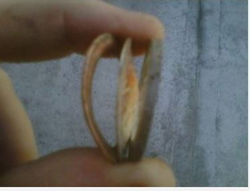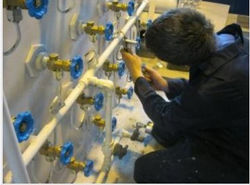top of page
High-Pressure Cylinder Maintenance

TKS provides visual, hydrostatic, ultrasonic, and acoustic emission testing in accordance with the ASME Boiler and Pressure Vessel Code, Nondestructive Examination Guidelines, and American Petroleum Institute API 510 Code – In-service Inspection of Pressure Vessels. During these tests, the vessel body and heads are examined for tightness, corrosion, weld defects, and fatigue-related flaws.
 1) Valves: TKS removes old worn out valves by disconnecting the manifold pigtails from each valve and unscrewing the valves. Once removed the internal threads are cleaned and inspected. A new valve is installed after applying thread sealant. The manifold pigtails are then reattached and a leak test is performed. |  2) Relief devices: TKS removes old worn out relief devices by disconnecting vent tubing and unscrewing the relief bodies from the tubes. Once removed the internal threads are cleaned and inspected. A new relief device is installed after applying thread sealant. The vent tubing is then reattached and a leak test is performed. |
|---|---|
 3) Rupture discs and shear rings: TKS replaces rupture discs and shear rings by disassembling the relief device body and removing the old components. The new components are assembled in the relief body using hydrocarbon grease. The relief body is then reassembled according to manufacturer specifications and torques. |  4) Vent tubing: WINS replaces vent tubing by unscrewing the old vent tubing from the relief device and unthreading it from the support structure. New vent tubing and caps are then installed on the relief body. |
 5) Bull plugs: The first step in bull plug replacement is removing the valves or relief devices. After valves and relief devices are removed a striking wrench is used to remove the bull plug. The internal threads and tube face are cleaned and inspected. The new bull plug is installed by greasing the seals with hydrocarbon grease and threading the bull plug back in place according to manufacturer specifications and torques. A leak test is the final step. |  6) Manifolds: WINS replaces manifolds by taking detailed measurements of valve spacing and manufacturing a new manifold. The pigtails to all valves are then disconnected and the manifold unbolted from the bulkhead. The pigtails from the new manifold are then connected to the valves and the manifold is bolted to the bulkhead. A leak test is the final step. |
bottom of page




